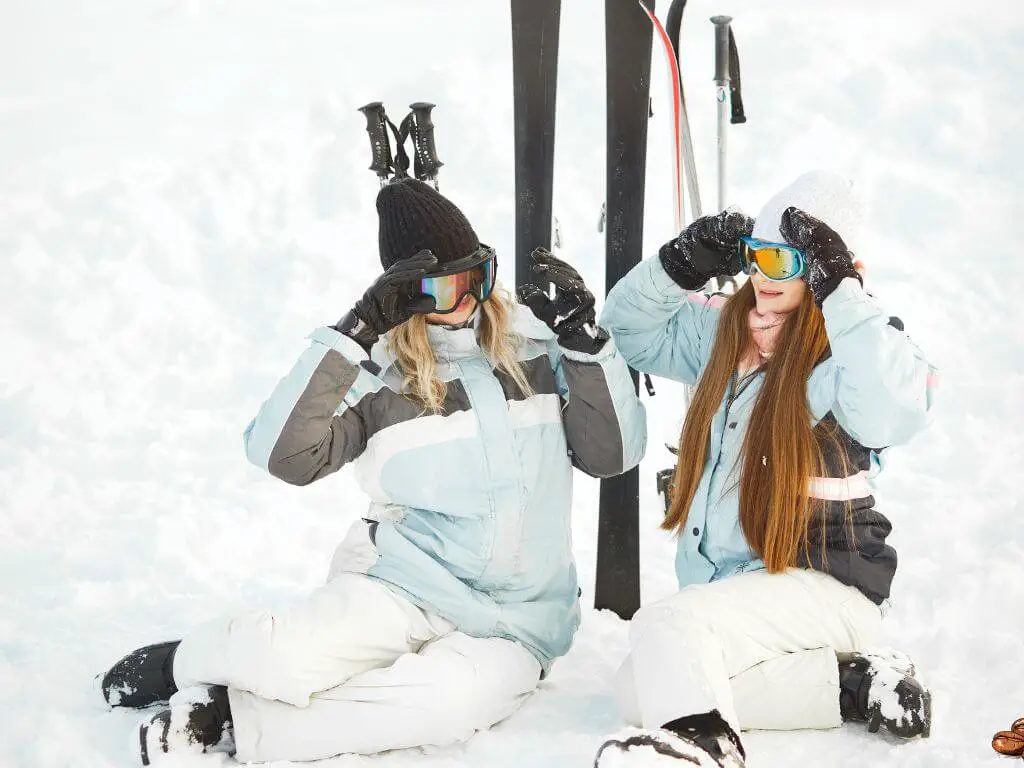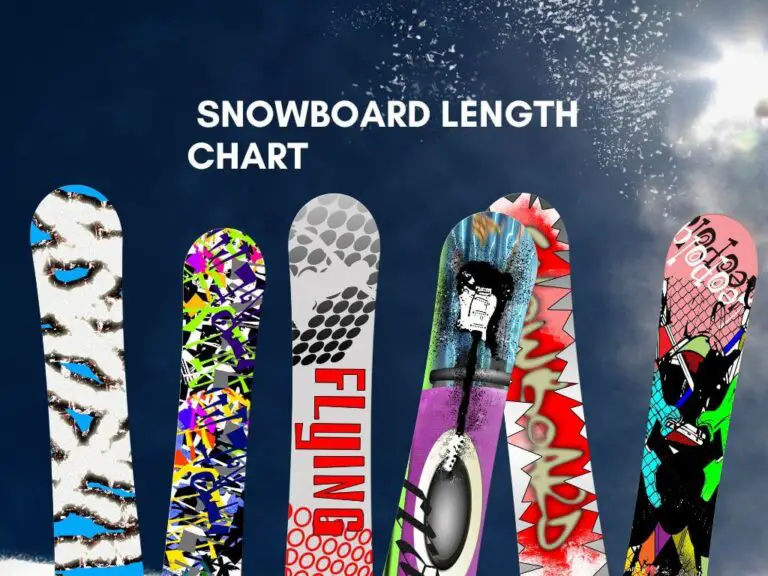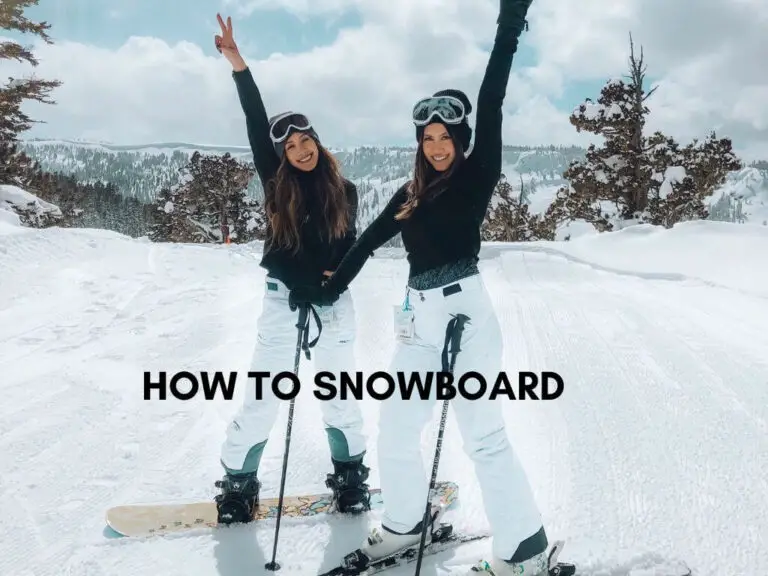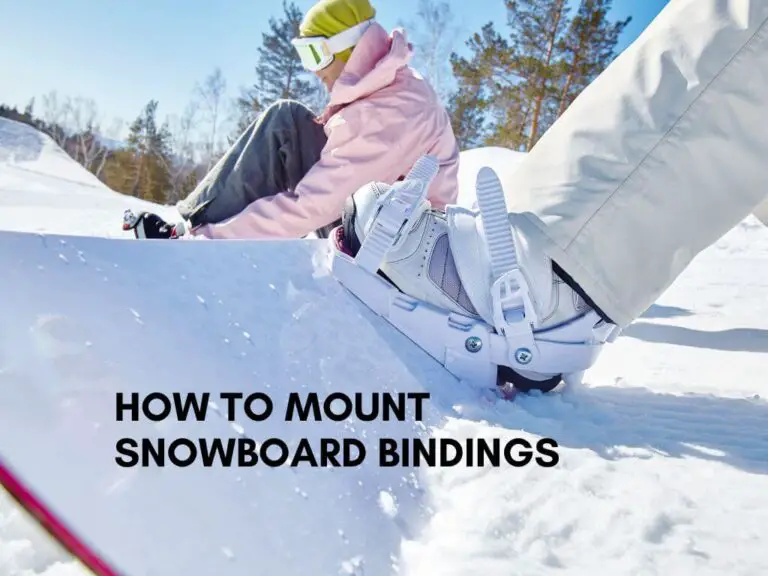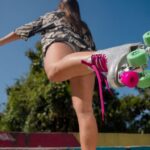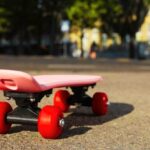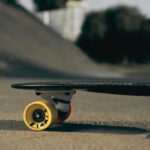When it comes to conquering the mountains, having the right gear is essential—and that starts with choosing the perfect snowboard. Whether you’re a seasoned pro or a first-time rider, understanding the different types of snowboards can make all the difference in your performance and enjoyment on the slopes. From carving through fresh powder to nailing tricks in the terrain park, each snowboard is designed with a specific purpose in mind.
In this guide, we’ll break down the various styles, features, and best uses for each type of snowboard, helping you find the ideal match for your riding style. Get ready to elevate your snowboarding game and make every run unforgettable!
History Of Snowboarding
Snowboarding has become a popular winter sport enjoyed by many people worldwide. The different types of snowboards serve various styles and terrains. Let’s explore the fascinating history of snowboarding to understand how this sport evolved.
Origins Of Snowboarding
Snowboarding started as a recreational activity in the 1960s. Sherman Poppen, an engineer from Michigan, invented the first snowboard. He called it the “Snurfer” because it combined snow and surfing. He created it by fastening two skis together for his children to play on the snow.
The Snurfer quickly gained popularity, and by the late 1960s, Snurfer competitions were held. In 1977, Jake Burton Carpenter improved the Snurfer design by adding foot straps for better control. This innovation marked the birth of modern snowboarding.
Other key figures in the origins of snowboarding include:
- Dimitrije Milovich – Adapted surfboard designs for snow.
- Tom Sims – Created the “skiboard” using skateboard materials.
These pioneers laid the foundation for snowboarding, transforming it from a backyard activity to a recognized sport.
Evolution Of Snowboard Design
Snowboard design has come a long way since the early days. The first boards were simple and lacked the advanced features we see today. Over the years, designs evolved to cater to different riding styles and terrains.
Here are some key milestones in the evolution of snowboard design:
- 1970s: Introduction of metal edges for better grip on snow.
- 1980s: Development of camber profiles for improved stability.
- 1990s: Emergence of twin-tip designs for freestyle riding.
- 2000s: Adoption of rocker profiles for easier turns and floatation.
Modern snowboards come in various shapes and sizes, each designed for specific purposes:
| Type | Features |
|---|---|
| All-Mountain | Versatile, suitable for all terrains. |
| Freestyle | Twin-tip, flexible, ideal for tricks. |
| Freeride | Stiffer, directional, made for powder and backcountry. |
Innovations in materials and technology continue to enhance snowboard performance. Today’s boards are lighter, stronger, and more responsive, allowing riders to push the limits of the sport.
Types Of Snowboards
Choosing the right snowboard can make or break your snowboarding experience. Different types of snowboards are designed for various terrains and riding styles. Understanding these types can help you select the perfect board for your needs.
Freestyle Snowboards
Freestyle snowboards are ideal for riders who love performing tricks and jumps. These boards are typically shorter and more flexible, providing greater maneuverability and control. They are perfect for parks and halfpipes.
Key Features:
- Shorter Length: Makes it easier to spin and maneuver.
- Softer Flex: Enhances control and flexibility for tricks.
- Twin Tip Shape: Symmetrical design allows riding in both directions.
Freestyle boards often come with a twin-tip shape, making it easy to ride both regular and switch. These boards are not ideal for high-speed runs or deep powder but excel in park settings.
All-mountain Snowboards
All-Mountain snowboards are versatile and can handle various terrains. They are perfect for riders who enjoy exploring different parts of the mountain.
Key Features:
- Medium Flex: Balances control and stability.
- Directional Shape: Optimized for riding in one direction.
- Variety of Lengths: Suitable for different riding styles.
These boards can perform well in parks, on groomed runs, and in powder. They are a great choice for riders who want one board that can do it all.
Freeride Snowboards
Freeride snowboards are designed for off-piste and backcountry adventures. They are built to handle challenging terrains and deep snow.
Key Features:
- Stiffer Flex: Provides stability at high speeds.
- Directional Shape: Optimized for one-directional riding.
- Longer Length: Helps in floating over deep snow.
Freeride boards are not ideal for parks but excel in powder and rugged terrains. They offer excellent edge control and stability, making them perfect for experienced riders.
Powder Snowboards
Powder snowboards are specifically designed for deep snow conditions. They provide maximum floatation and maneuverability in powder.
Key Features:
- Wider Nose: Helps in floating over deep snow.
- Setback Stance: Puts more weight on the back foot for better control.
- Rocker-Camber Profile: Enhances floatation and maneuverability.
These boards are not suitable for groomed runs or park terrain but excel in deep powder. They are perfect for riders who spend most of their time in fresh snow.
Splitboards
Splitboards are designed for backcountry touring. They can be split into two skis for uphill travel and then reassembled for downhill snowboarding.
Key Features:
- Convertible Design: Can be split into skis for uphill travel.
- Climbing Skins: Attach to the base for better traction uphill.
- Sturdy Construction: Ensures durability in rugged conditions.
Splitboards are not ideal for resort riding but are perfect for those who love exploring untouched backcountry terrain. They offer the freedom to access remote areas with ease.
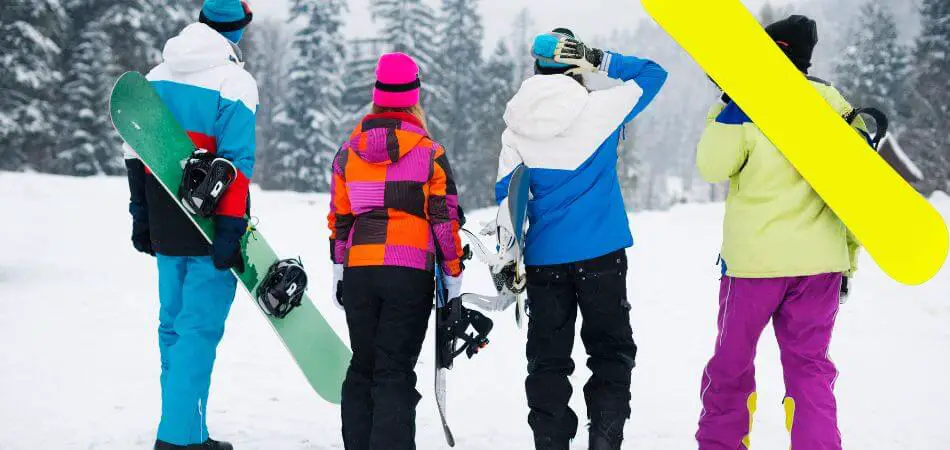
Snowboard Shapes And Profiles
Snowboarding offers thrilling experiences, and choosing the right snowboard is crucial. Different types of snowboards suit various riding styles and conditions. Understanding snowboard shapes and profiles helps you select the best board for your needs.
Let’s explore the different snowboard shapes and profiles.
Camber
Camber profiles are traditional and popular among many riders. They have a gentle arch in the center, creating contact points near the tip and tail. This shape offers several benefits:
- Precision and Control: Camber boards provide excellent edge hold and stability, perfect for carving turns.
- Pop and Power: The arch shape delivers a responsive and energetic ride, ideal for jumps and tricks.
- Versatility: Suitable for various terrains, including groomed runs and hard-packed snow.
Here’s a table summarizing the camber profile characteristics:
| Feature | Description |
|---|---|
| Contact Points | Near tip and tail |
| Best For | All-mountain, park, and precision riding |
Rocker
Rocker profiles, also known as reverse camber, have an upward curve between the bindings. This design offers unique advantages:
- Float in Powder: The lifted tips make rocker boards excellent for riding in deep snow.
- Catch-Free Ride: The lack of contact points reduces the risk of catching an edge, making it great for beginners.
- Playfulness: Rocker boards are more forgiving and easier to maneuver, ideal for freestyle and park riding.
Here’s a table summarizing the rocker profile characteristics:
| Feature | Description |
|---|---|
| Contact Points | Lifted tips and tail |
| Best For | Freestyle, powder, and beginners |
Flat
Flat profiles have no arch or curve, resulting in a flat base between the bindings. This shape balances the benefits of camber and rocker boards:
- Stability: The flat base provides a stable platform for riding, making it great for beginners and intermediates.
- Versatility: Flat boards perform well in various conditions, from groomed runs to light powder.
- Easy Transitions: The flat profile allows smooth transitions between turns, enhancing control and confidence.
Here’s a table summarizing the flat profile characteristics:
| Feature | Description |
|---|---|
| Contact Points | Flat base |
| Best For | All-mountain and beginners |
Hybrid Profiles
Hybrid profiles combine elements of camber, rocker, and flat profiles, offering a versatile riding experience. These boards cater to various riding styles and conditions:
- Best of Both Worlds: Hybrid profiles blend the precision of camber with the float of rocker, making them adaptable to different terrains.
- Enhanced Performance: The combination of profiles provides a balanced ride, with improved edge hold and maneuverability.
- Customizable Options: Different manufacturers offer unique hybrid designs to suit specific riding preferences.
Here’s a table summarizing the hybrid profile characteristics:
| Feature | Description |
|---|---|
| Contact Points | Varies (combination of camber, rocker, and flat) |
| Best For | All-mountain, freestyle, and versatile riding |
Snowboard Construction Materials
Snowboards come in many shapes and sizes, but the materials used in their construction play a crucial role in performance. Understanding these materials can help you choose the best snowboard for your needs. This section explores the different materials that make up a snowboard, from the core to the edges and base.
Wood Cores
The core of a snowboard is often made from wood. Wood cores provide a balance of strength, flexibility, and light weight. Several types of wood are used in snowboard cores:
- Poplar: Lightweight and flexible, making it ideal for all-mountain boards.
- Beech: Denser and stiffer, providing durability and stability.
- Aspen: Lightweight and affordable, commonly used in entry-level boards.
- Bamboo: Eco-friendly and offers excellent strength-to-weight ratio.
Some snowboards use multi-wood cores to combine the benefits of different woods. These cores are laminated together, offering a tailored ride experience. For instance, a mix of poplar and beech can provide both flexibility and durability.
Here’s a quick comparison of wood types used in snowboard cores:
| Wood Type | Characteristics |
|---|---|
| Poplar | Lightweight, Flexible |
| Beech | Dense, Stiff |
| Aspen | Lightweight, Affordable |
| Bamboo | Eco-friendly, Strong |
Fiberglass
Fiberglass is wrapped around the wood core to add strength and flexibility. It also helps distribute the forces evenly across the snowboard. There are two main types of fiberglass used in snowboards:
- Biaxial Fiberglass: Fibers are woven at a 90-degree angle. This offers a softer, more forgiving ride. Ideal for beginners and freestyle riders.
- Triaxial Fiberglass: Fibers are woven at 45-degree angles. This offers more stiffness and better edge hold. Great for advanced riders and high-speed carving.
Fiberglass helps in making the snowboard responsive. The type of fiberglass used can affect the board’s performance:
| Type | Characteristics |
|---|---|
| Biaxial | Softer, Forgiving |
| Triaxial | Stiffer, Responsive |
Carbon Fiber
Carbon fiber is used to make snowboards lighter and more responsive. It is often added in strips or sheets. Carbon fiber offers several benefits:
- Lightweight: Reduces the overall weight of the board.
- Stiffness: Provides better energy transfer and pop.
- Durability: Increases the lifespan of the snowboard.
Carbon fiber is often used in high-end snowboards aimed at advanced riders. It enhances performance, especially in terms of speed and control. The placement of carbon fiber can vary:
- Tip to Tail: For maximum stiffness and control.
- Underfoot: For better energy transfer during turns.
Metal Edges
Metal edges are crucial for grip and control. They allow the snowboard to carve through snow and ice. Metal edges are usually made from steel and come in different types:
- Full Wrap Edges: These encircle the entire board. They provide maximum durability and edge hold.
- Partial Wrap Edges: These cover only the contact points. They reduce weight but offer less durability.
Metal edges can also be tuned for different riding styles:
- Sharp Edges: Ideal for icy conditions. They offer maximum grip.
- Dull Edges: Better for park riding. They reduce the risk of catching an edge.
Here’s a quick look at the types of metal edges:
| Edge Type | Characteristics |
|---|---|
| Full Wrap | Durable, Maximum Edge Hold |
| Partial Wrap | Lightweight, Less Durable |
Base Materials
The base material of a snowboard affects its speed and durability. There are two main types of base materials:
- Extruded Bases: Made by melting and shaping polyethylene. These bases are durable and easy to repair. They are also less expensive but slower than sintered bases.
- Sintered Bases: Made by compressing and heating polyethylene. These bases are faster and more porous, allowing for better wax absorption. They are more expensive and harder to repair.
Each type of base material has its pros and cons:
| Base Type | Characteristics |
|---|---|
| Extruded | Durable, Easy to Repair, Slower |
| Sintered | Fast, Better Wax Absorption, Expensive |
The choice of base material can significantly impact your riding experience. If you prioritize speed and performance, a sintered base is ideal. For durability and ease of maintenance, an extruded base is a better choice.
Binding And Boot Compatibility
Choosing the right snowboard involves more than just picking the board itself. Binding and boot compatibility is crucial for a comfortable and efficient ride. The combination of bindings and boots can affect your control, comfort, and overall snowboarding experience. Let’s dive into the different types of bindings and snowboard boots to help you make an informed choice.
Strap-in Bindings
Strap-in bindings are the most common type of snowboard bindings. These bindings use straps to secure your boots to the board. Here are some key features and benefits:
- Adjustability: Strap-in bindings offer high adjustability. You can fine-tune the tightness of the straps to get the perfect fit.
- Comfort: The straps are usually padded, providing extra comfort during long rides.
- Versatility: These bindings work with most snowboard boots, making them a versatile choice.
Strap-in bindings come in various styles:
| Type | Features |
|---|---|
| Two-Strap Bindings | Separate straps for toes and ankles, offering maximum control. |
| Rear-Entry Bindings | Highback that folds down for easy entry and exit. |
Step-on Bindings
Step-on bindings offer a quick and easy way to attach your boots to the board. These bindings are designed for speed and convenience. Here are some key features:
- Speed: Step-on bindings allow you to attach your boots in seconds, saving time on the slopes.
- Ease of Use: No need to fiddle with straps. Just step in and go.
- Compatibility: Only works with specific step-on boots, limiting your boot choices.
Step-on bindings are a newer technology:
| Brand | Features |
|---|---|
| Burton Step-On | Three connection points for secure attachment. |
| K2 Clicker | Two points of connection for fast and easy use. |
Snowboard Boot Types
Snowboard boots come in various styles, each designed for different types of riding. Choosing the right boots is essential for comfort and performance.
- Soft Boots: Great for freestyle and park riding. Offer flexibility and comfort.
- Hard Boots: Used for alpine snowboarding. Provide maximum support and control.
- Hybrid Boots: Combine features of soft and hard boots. Suitable for all-mountain riding.
Here is a quick comparison of snowboard boot types:
| Type | Best For | Features |
|---|---|---|
| Soft Boots | Freestyle | Flexible, Comfortable, Less Support |
| Hard Boots | Alpine | Stiff, Maximum Support, High Control |
| Hybrid Boots | All-Mountain | Medium Flex, Versatile, Balanced Support |
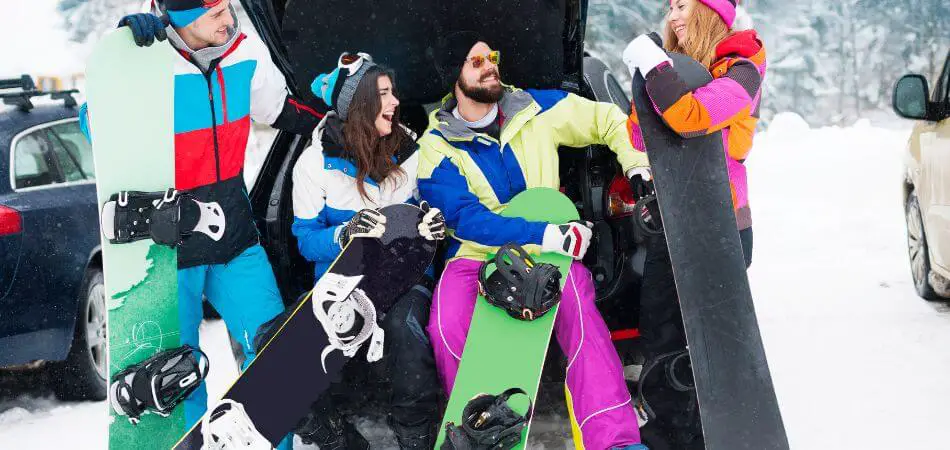
Choosing The Right Snowboard
Choosing the right snowboard can make or break your riding experience. With so many options available, it’s essential to find a board that matches your skill level, terrain preference, and personal style. This guide will help you navigate the different types of snowboards to find the perfect fit.
Rider Skill Level
Understanding your skill level is crucial for selecting the right snowboard. Beginners need boards that offer stability and ease of control, while advanced riders look for performance and agility.
Beginner:
- Soft flex for easy turning and control
- Directional or twin shape for versatility
- Rocker or flat profile for less edge catching
Intermediate:
- Medium flex for a balance of control and performance
- Directional twin shape for all-mountain capabilities
- Camber or hybrid profiles for better edge hold
Advanced:
- Stiff flex for high-speed stability and responsiveness
- Directional or true twin shape for specialized riding
- Camber or hybrid profiles for precision and power
Terrain And Riding Style
Different terrains and riding styles require specific types of snowboards. Knowing where and how you plan to ride will help narrow down your choices.
Freestyle:
- Twin shape for riding switch easily
- Soft to medium flex for tricks and jumps
- Rocker or hybrid profile for playful and forgiving rides
All-Mountain:
- Directional twin shape for versatility on any terrain
- Medium flex for a balance of performance and control
- Camber or hybrid profiles for stability and edge hold
- Directional shape for better float in powder
- Stiff flex for stability at high speeds
- Camber or hybrid profiles for precision in varied conditions
Personal Preferences
Your personal preferences also play a significant role in choosing the right snowboard. Factors like graphics, brand loyalty, and eco-friendliness can influence your decision.
Graphics:
- Customizable graphics for a unique look
- Bold and vibrant designs for visibility on the slopes
- Minimalist designs for a sleek and professional appearance
Brand Loyalty:
- Well-known brands offer reliability and quality
- Niche brands provide specialized options
- Customer reviews can guide your choice
Eco-Friendliness:
- Sustainable materials like bamboo and recycled plastics
- Eco-friendly manufacturing processes
- Brands committed to environmental causes
Maintenance And Care
Snowboarding is a thrilling sport that requires the right equipment for the best experience. Different types of snowboards cater to various styles, such as freestyle, all-mountain, and alpine. To ensure your snowboard performs well and lasts longer, proper maintenance and care are essential.
Storage
Proper storage is crucial to keep your snowboard in good condition. Follow these tips to store your snowboard correctly:
- Clean the snowboard: Remove any dirt, snow, and grime from the base and edges. Use a soft cloth and mild soap to clean it thoroughly.
- Dry it completely: Ensure the snowboard is completely dry to prevent rust and mold. Wipe it with a dry cloth and let it air dry if necessary.
- Apply a protective wax: Coat the base with a thick layer of wax. This protects the base from drying out and prevents oxidation.
- Store in a cool, dry place: Find a location away from direct sunlight and moisture. A closet or a garage with controlled temperature works well.
- Keep it off the ground: Use a snowboard rack or hang it on a wall to avoid contact with the ground.
Regular Maintenance
Regular maintenance ensures your snowboard performs optimally. Here’s a simple guide to keep your board in top shape:
- Waxing: Wax your snowboard every 3-5 rides. This helps the board glide smoothly over the snow. Use a waxing iron and apply the wax evenly over the base.
- Edge sharpening: Keep the edges sharp to maintain control and grip. Use an edge sharpener or take it to a professional for tuning.
- Base repair: Check for scratches or gouges on the base. Use a P-Tex candle to fill in minor scratches and smooth it out with a scraper.
- Binding check: Inspect the bindings regularly. Tighten any loose screws and check for any cracks or damages.
Here’s a simple maintenance schedule to follow:
| Task | Frequency |
|---|---|
| Waxing | Every 3-5 rides |
| Edge sharpening | Every 5-10 rides |
| Base repair | As needed |
| Binding check | Every ride |
Repairing Minor Damages
Minor damages can affect your snowboard’s performance. Learn to fix them yourself with these tips:
- Fixing scratches: Clean the scratched area with rubbing alcohol. Lightly sand the area and apply P-Tex. Let it cool, then scrape off the excess.
- Repairing gouges: For deeper gouges, use a P-Tex candle. Light the candle and drip the melted P-Tex into the gouge. Let it harden, then scrape it smooth.
- Edge repair: If the edge is damaged, use a file to smooth out any burrs. For bent edges, use an edge tool to straighten them carefully.
- Binding repair: Check for any loose screws or broken parts. Tighten screws and replace any damaged components. Use a thread locker to keep screws in place.
By following these steps, you can extend the life of your snowboard and ensure it performs well on the slopes.
Conclusion And Recommendations
Choosing the right snowboard can be a thrilling but daunting task. With so many types available, it’s essential to understand which board suits your style and skill level. Below are some recommendations to help you make an informed decision and maximize your snowboarding experience.
Selecting The Ideal Snowboard
Picking the perfect snowboard requires considering several factors. Skill level, riding style, and terrain preferences play crucial roles. Here are some key points to consider:
- Skill Level: Beginners need softer, more flexible boards for easy turning. Experts might prefer stiffer boards for better stability.
- Riding Style: Freestyle riders should opt for twin-tip boards. Freeriders may choose directional boards for better control.
- Terrain Preferences: All-mountain boards are versatile. Powder boards are perfect for deep snow.
Here’s a table to summarize the types of snowboards and their ideal uses:
| Type of Snowboard | Best For |
|---|---|
| All-Mountain | Versatility across various terrains |
| Freestyle | Park and trick riding |
| Freeride | Off-piste and backcountry |
| Powder | Deep snow conditions |
Board length and width are also vital. A board too long or too short can hinder your performance. Use the manufacturer’s size chart to find the best fit.
Enjoying The Snowboarding Experience
Once you’ve selected the right snowboard, it’s time to hit the slopes. Here are tips to enhance your snowboarding adventure:
- Wear appropriate gear. A helmet, gloves, and goggles are essential for safety and comfort.
- Take lessons. Beginners should invest in lessons to learn proper techniques and boost confidence.
- Practice regularly. Consistent practice helps improve skills and builds muscle memory.
- Stay hydrated and take breaks. Snowboarding can be exhausting. Keep yourself hydrated and rest when needed.
Join a snowboarding community to share experiences and tips. Learning from others can be invaluable.
Explore different terrains to challenge yourself and improve your skills. Each terrain offers unique learning opportunities.
Finally, always check weather conditions before heading out. Good weather ensures a safer and more enjoyable ride.
Follow these tips to make the most of your snowboarding experience. With the right snowboard and preparation, you’re set for an exciting adventure on the slopes!
Frequently Asked Questions
How Many Types Of Snowboarding Are There?
There are four main types of snowboarding: freestyle, freeride, alpine (carving), and splitboarding. Each offers a unique experience.
Is Rocker Or Camber Better For Park?
Camber boards offer better pop and stability for park riding. Rocker boards are more forgiving and easier for jibbing. Choose based on your style.
How Do I Know What Kind Of Snowboard To Get?
Consider your skill level, riding style, and preferred terrain. Check size charts for proper length and width. Seek expert advice.
Is Rocker Or Camber Better For Powder?
Rocker is better for powder. It provides better floatation and maneuverability, making it easier to ride in deep snow.
Conclusion
Choosing the right snowboard enhances your experience on the slopes. Each type offers unique benefits tailored to different riding styles. Whether you prefer freestyle, all-mountain, or powder boards, understanding their features is essential. Equip yourself with the right gear and enjoy an unforgettable snowboarding adventure.
Happy riding!

